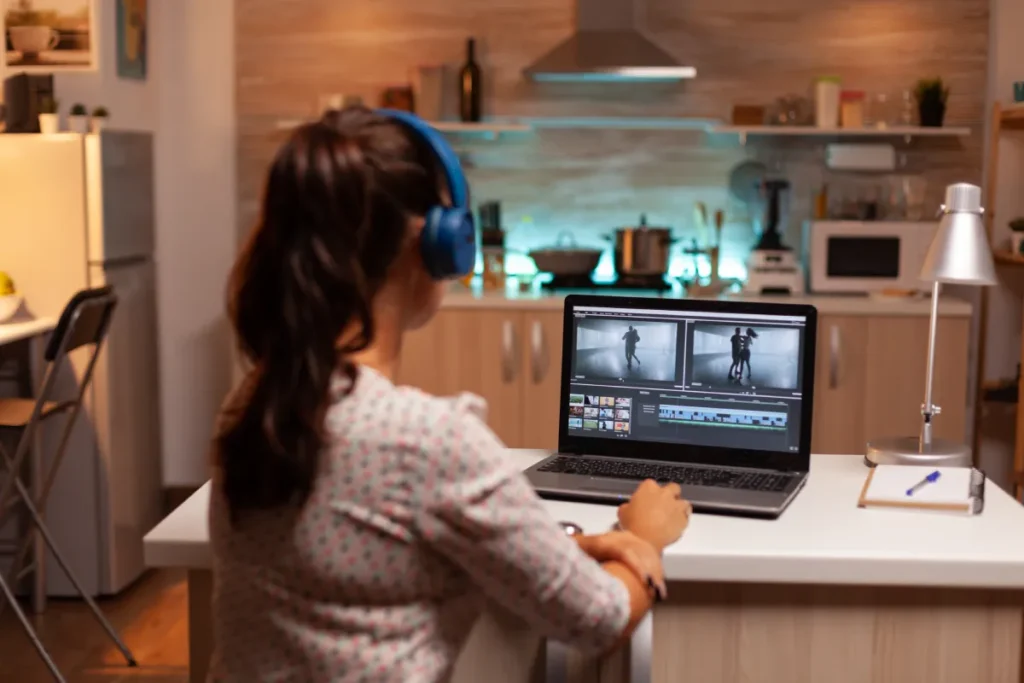So you’re looking to launch a video marketing campaign, but you’re not quite sure where to start. Or maybe you’ve started already, but you feel like things are lacking a particular spark? Creating a campaign that holds viewers’ attention and drives action isn’t easy, but it’s also not quite as hard as you might think either.
Below you’ll find 5 creative video tips that can help you craft an effective campaign. Treat them like a road map, and finding success will be a breeze.
1. Hook your viewers’ attention early.
How early? Like, within-the-first-10-seconds kind of early. The National Centre for Biotechnology Information reports that the average attention span is around 8 seconds, so your video should aim to present something so compelling right up front that people can’t help but commit to watching a little bit longer.
Do you plan on giving something away for free or at a discount? Did you personalise key elements of your video? Are you making a crazy-exciting announcement? Feature those bullets – or, at the very least, tease them out – within the first 10 seconds of your video. Viewers should immediately understand why they’re watching and why they should keep watching. Basically you want to answer the question, “What’s in it for me?”
2. Keep it quick.
The longer a video drags on, the less engagement you’ll see. To prove this point, Wistia examined 564,710 videos totaling over 1.3 billion plays. Turns out that the ideal video length is around 2 minutes, with a significant viewer drop-off occurring between 2 minutes and 3 minutes for videos that carry on longer.
Another interesting discovery they made: the level of engagement that occurs during a 90-second video vs. a 120-second video is pretty comparable. You really shouldn’t stress over editing down video content for time until you cross that 2-minute mark.
For marketers who are looking for their video campaigns to do a bit more informational heavy lifting and don’t think they can condense content, fear not. Wistia also noted a second video length sweet spot that occurs between 6 and 12 minutes – hardly any drop off occurs in that window. They’ve interpreted it to mean, and we agree, that if viewers are still watching at 6 minutes, they’re watching because they’re focused on your content.
While you shouldn’t take this as a free pass to load your video with everything single thing you’ve ever wanted to share, know that that window is there if you need it.
3. Evoke some emotion.
I’m going to recycle one of my favourite statements from Psychology Today for this point: “The emotional response to an ad has far greater influence on a consumer’s reported intent to buy a product than does the ad’s content – by a factor of 3-to-1 for television commercials and 2-to-1 for print ads.”
Of course people want to see that your product or service will save their world. That goes without saying. But do you know how many other similar products and services out there will do the same thing? Sales aren’t won through logic; they’re won through appealing to someone’s emotions. How is your product or service going to make someone feel? Relieved, safe, looked-after? Empowered, excited, limitless? Do you simply want to make people laugh? Pick your emotion profile, if you will, and design a video campaign that mirrors those feelings.
Dollar Shave Club does a really awesome job of this in a marketing video titled “Our Blades are F***ing Great”. I honestly can’t speak to their blades, but I can say this campaign is f***ing great. It’s genuinely funny, it conveys a great irreverence and viewers get the message that these guys sell cheap, high-quality razors that get the job done, dammit.
4. Add subtitles.
Here’s some news: not everyone watches video with their sound on. Think about all the different ways someone might come into contact with your video. Scrolling through Facebook mobile, opening their email at work, killing time on their phone before meeting someone. Whatever the scenario, there’s no guarantee viewers will want or be able to listen with sound.
Building a video campaign that caters to all types of viewers means more than optimising for mobile (though you should do that, too). It means taking into consideration all the different ways someone will be consuming your content. By adding subtitles you guarantee that viewers get your point even if they can’t hear you.
5. Don’t forget your CTA!
Most importantly, clearly drive your viewers towards an action and make it easy for them to follow through. Make your CTA clear (Enroll now! Download this! Buy that!) and then make links highly visible.
Even better than including a CTA at the end of your video where it traditionally appears, consider adding a small, unobtrusive linked overlay right from the start. That way interested viewers have the option to click through immediately to take action instead.
Want more?
Download our How to Stay Ahead of the Game in the Marketing Industry eBook:
Want some more creative video tips to optimise your campaign strategy? You might be interested in these blogs…
Why Video is the Key to Emotionally-Charged Creative Marketing





